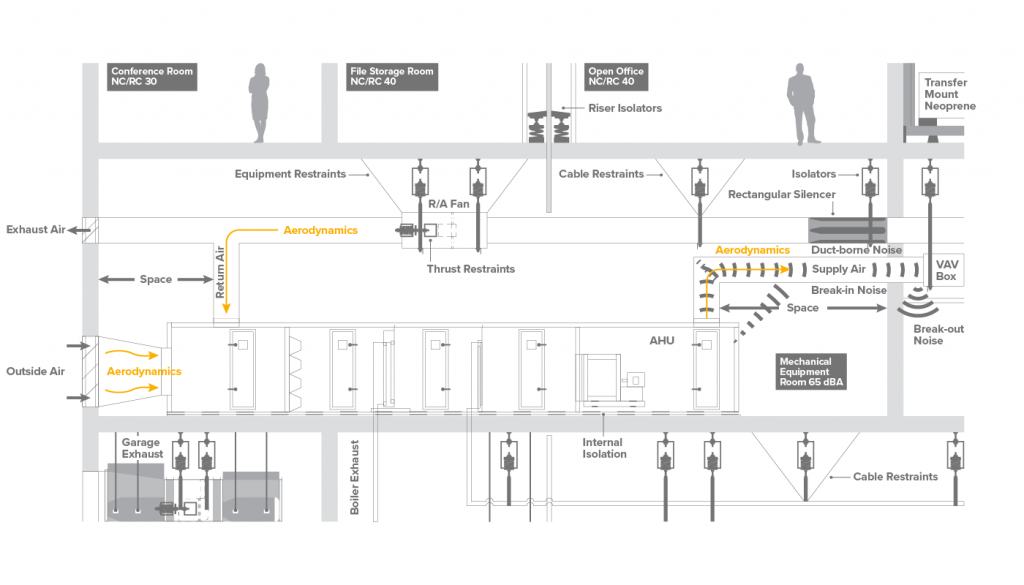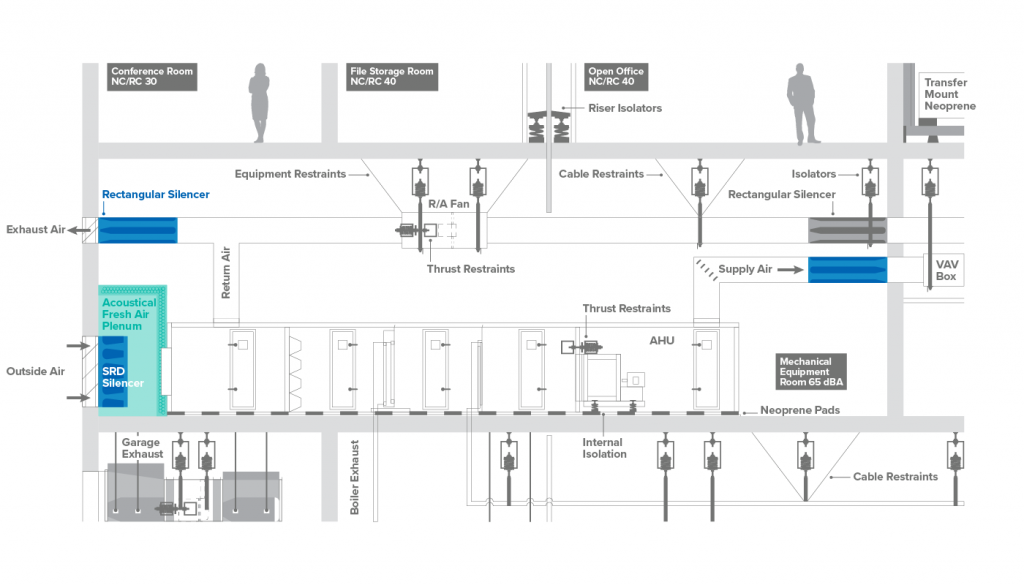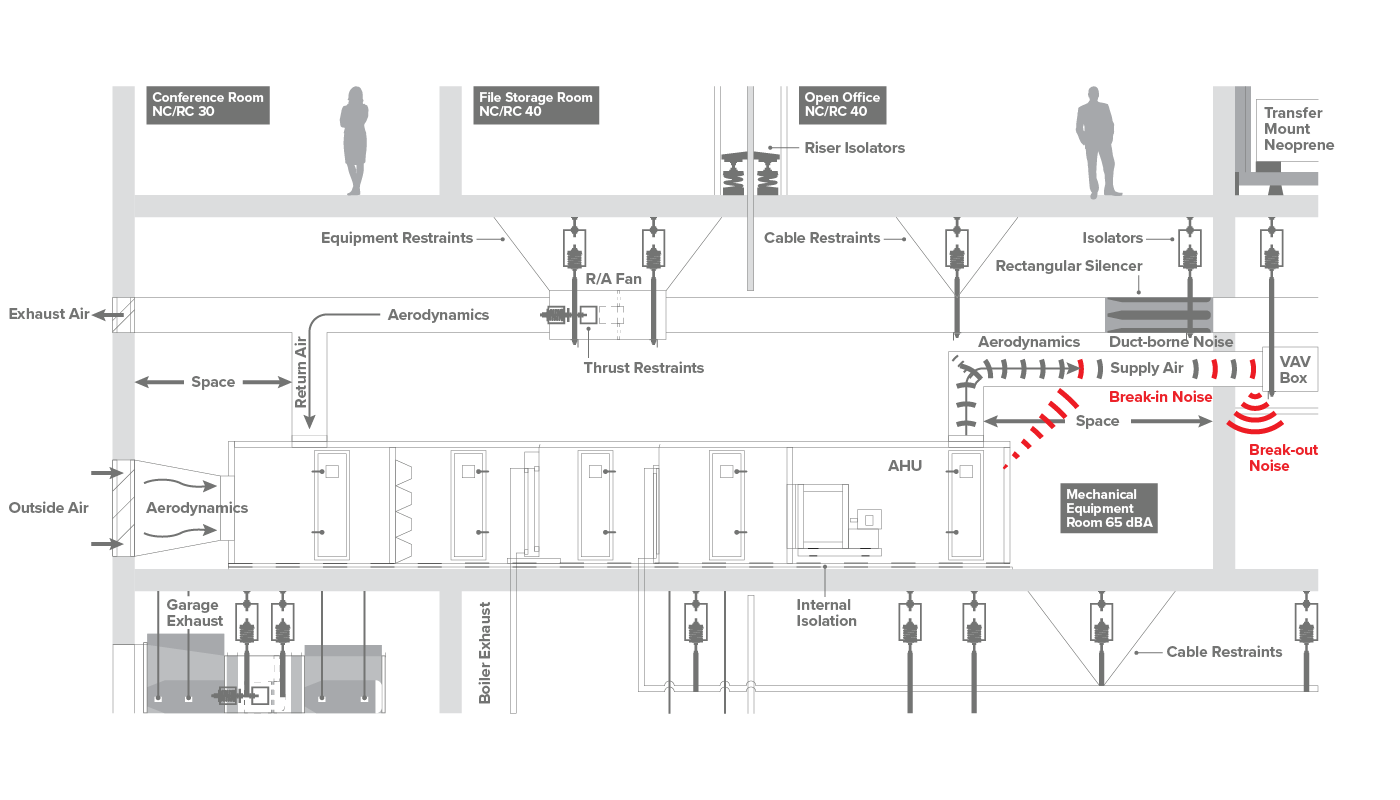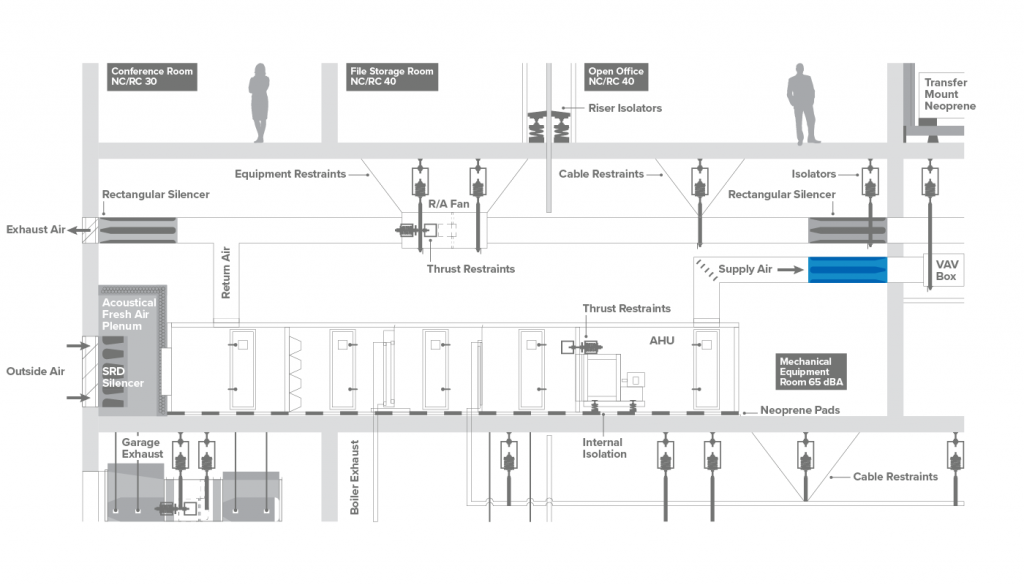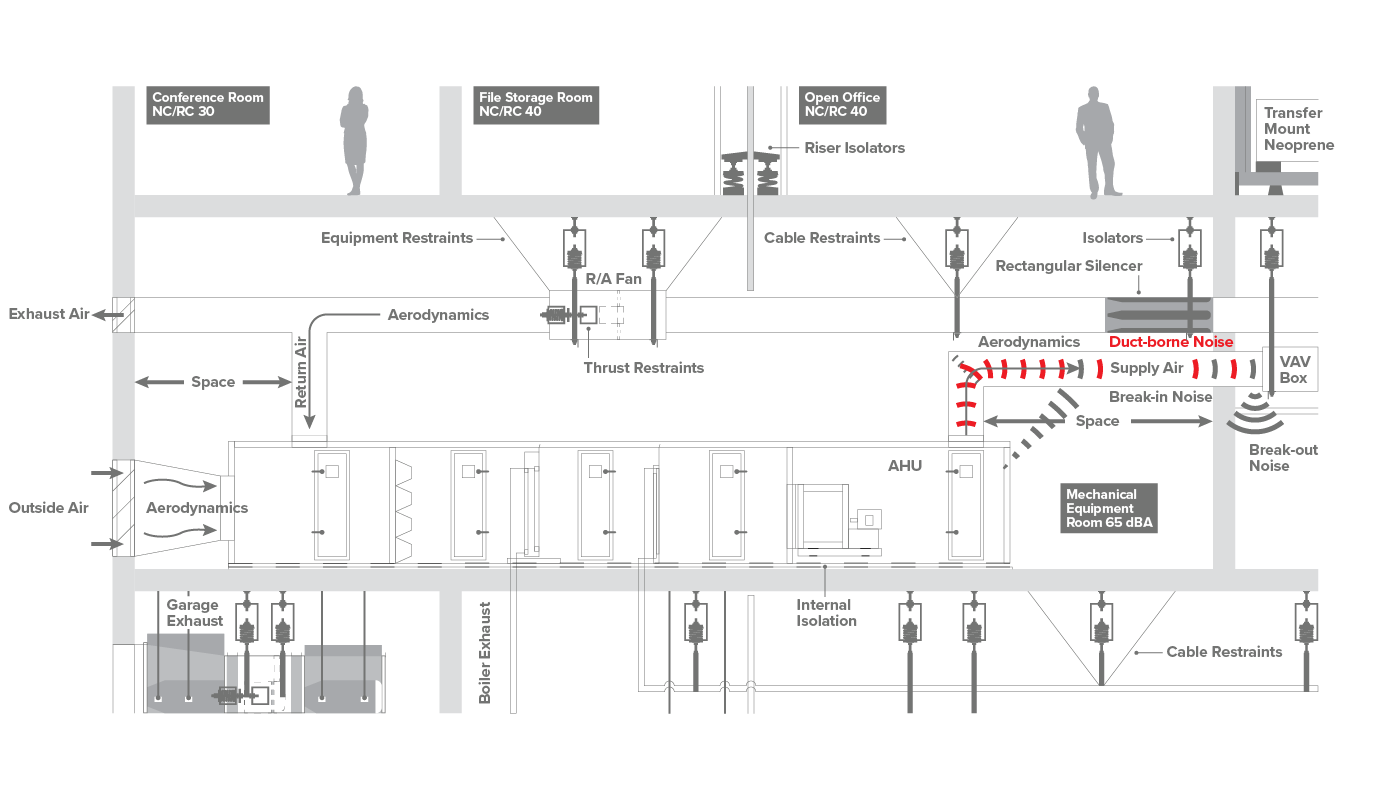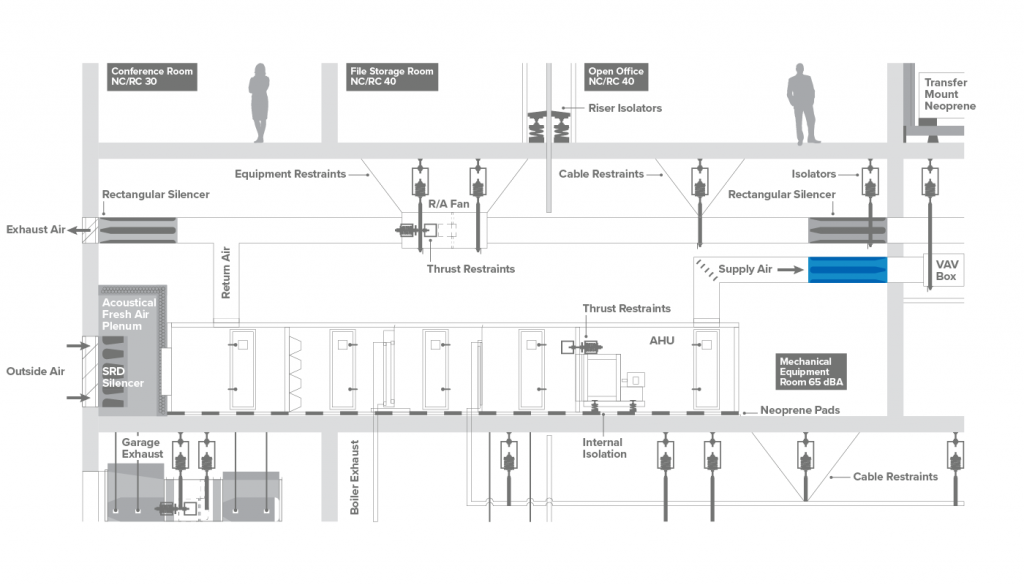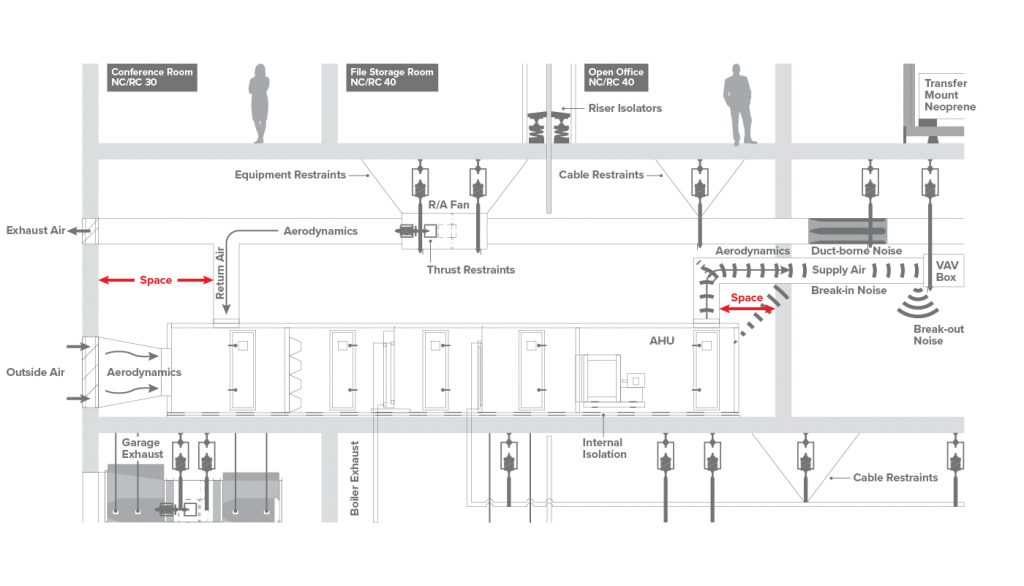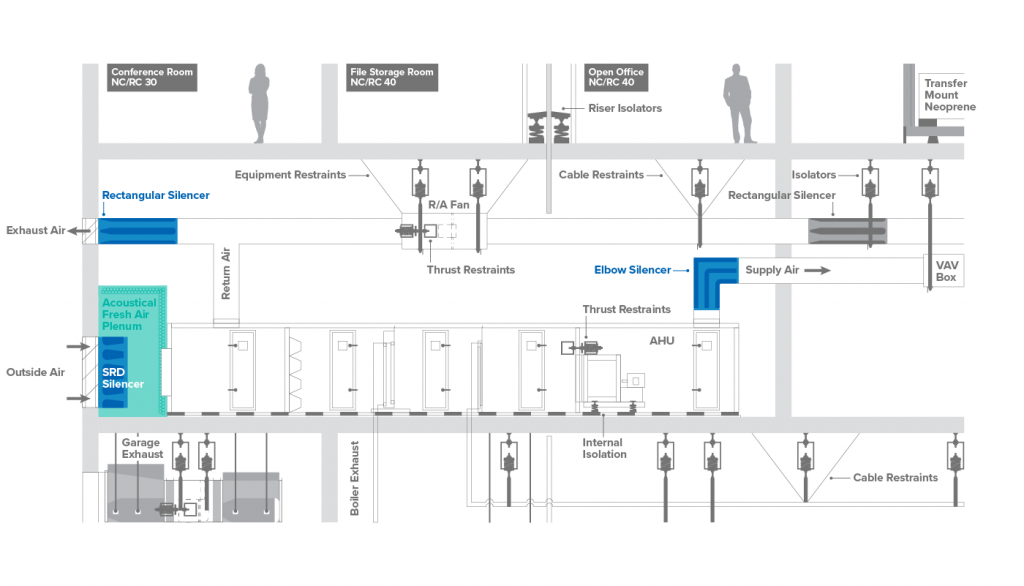Air handling units (AHUs) are common in the mechanical rooms of large buildings. These mechanical rooms are designed with small footprints to maximize tenant space, leaving minimal room for noise control. As a result, the mechanical room, and in turn the air handling unit, is often situated close to the occupied space. Without a proper noise control solution, a noise problem will likely occur.
Aerodynamics

Solution
Flow shaping silencers. The type, shape and size of the silencer does not only depend on the required insertion loss. Silencers with flow shaping internals help minimize pressure drop and provide uniform air distribution for fan intake and discharge.
EX casing silencers are designed with the acoustic media out of the airstream, resulting in noise reduction at no added pressure drop (compared to ductwork)
Projects: Baystate Medical Center, Metropolitan Life Office Building, IBM Celestica
Breakout/Break-in Noise

Problem
Noise can break-out of duct walls and into the occupied space. This usually occurs at the point of entry into a room. Even if the silencer is located right at the noise source, noise from other equipment in the mechanical room can break into the ductwork after the silencer and result in a noise problem.

Solution
An acoustical analysis is required to determine how much breakout will occur and where the noise is likely to break out of the ductwork.
HTL (High Transmission Loss) silencers and sometimes HTL ductwork is recommended in mechanical rooms where break-in is possible. Installing a silencer at the wall between the mechanical room and the occupied space will reduce break-in before and prevent breakout noise from reaching the occupied space.
Projects: Charles Tupper Office Building, CBC Headquarters
Ductborne Noise

Problem
Noise traveling through the ductwork and out of the diffusers and return grills is a problem that should be addressed at the design stage. However, where to locate the silencers, obscure duct transitions and precise calculation of the amount of silencing required are common issues that designers run into.

Solution
This process always needs to start with a systems analysis that includes transmission loss calculations, aerodynamic analysis and a survey of the project-specific requirements (space, IAQ, pressure drop, and cost). A project-specific solution can then be selected and applied.
Projects: Metro Center, Lietrim Computer Center, CBC Headquarters
Space

Solution
Fit-the-system silencers, which take the shape of the duct, enable designers to achieve the insertion loss required across all bands in the limited duct space available, while also keeping system effects to a minimum.
ASHRAE recommends 3-5 duct diameters on either side of a silencer, however, this amount of space is rarely available. Fit-the-system silencers help overcome space restrictions that most consultants face on a regular basis.
Projects: Baystate Medical Center, Waterpark Office Building, IBM Celestica, Niagara Courthouse Theater

